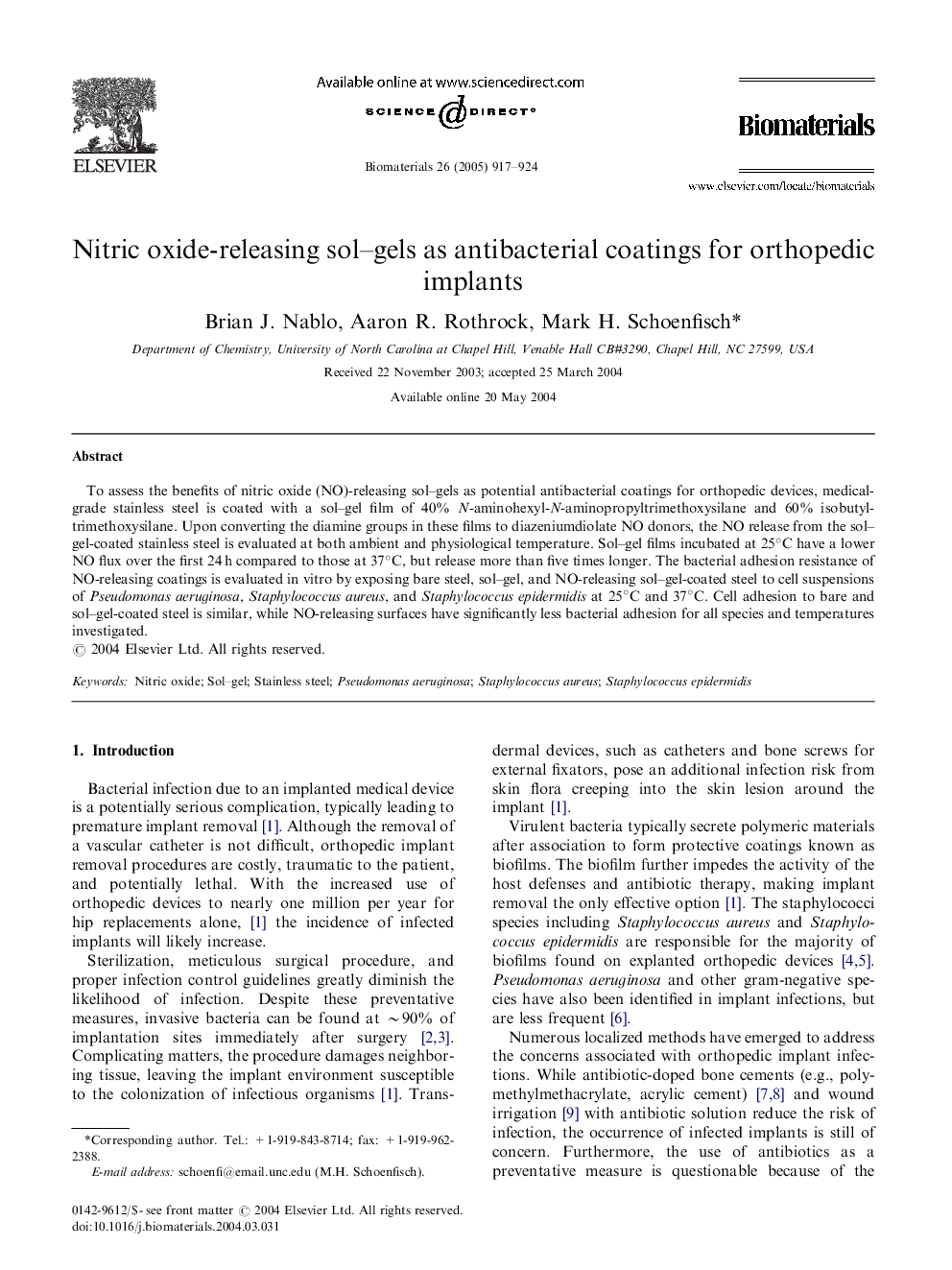| Article ID | Journal | Published Year | Pages | File Type |
|---|---|---|---|---|
| 10230264 | Biomaterials | 2005 | 8 Pages |
Abstract
To assess the benefits of nitric oxide (NO)-releasing sol-gels as potential antibacterial coatings for orthopedic devices, medical-grade stainless steel is coated with a sol-gel film of 40% N-aminohexyl-N-aminopropyltrimethoxysilane and 60% isobutyltrimethoxysilane. Upon converting the diamine groups in these films to diazeniumdiolate NO donors, the NO release from the sol-gel-coated stainless steel is evaluated at both ambient and physiological temperature. Sol-gel films incubated at 25°C have a lower NO flux over the first 24 h compared to those at 37°C, but release more than five times longer. The bacterial adhesion resistance of NO-releasing coatings is evaluated in vitro by exposing bare steel, sol-gel, and NO-releasing sol-gel-coated steel to cell suspensions of Pseudomonas aeruginosa, Staphylococcus aureus, and Staphylococcus epidermidis at 25°C and 37°C. Cell adhesion to bare and sol-gel-coated steel is similar, while NO-releasing surfaces have significantly less bacterial adhesion for all species and temperatures investigated.
Keywords
Related Topics
Physical Sciences and Engineering
Chemical Engineering
Bioengineering
Authors
Brian J. Nablo, Aaron R. Rothrock, Mark H. Schoenfisch,
